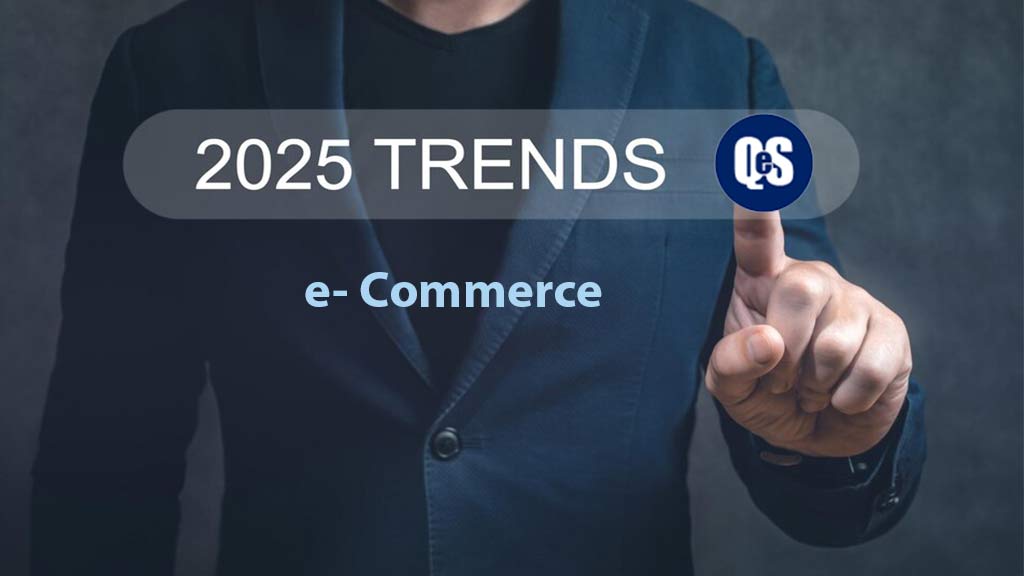Top eCommerce Trends You Need to Watch Out for in 2025
October 23, 2024In the fast-changing world of eCommerce, staying ahead of trends is vital for success. As we approach 2025, many emerging trends could reshape online retail. Therefore, this blog explores the top eCommerce trends you need to watch for, ensuring your business thrives in the coming years. Consequently, adapting to these trends will give you a competitive edge and help you meet evolving customer needs.
1. Personalization Through AI
AI is transforming eCommerce platforms by enabling hyper-personalization. Specifically, it analyzes customer behavior and preferences, which helps businesses tailor product recommendations, content, and marketing strategies. In 2025, you can expect more brands to leverage AI for creating personalized shopping experiences that truly resonate with individual customers on their eCommerce websites and apps. Thus, embracing this technology will enhance customer engagement and drive sales.
2. Social Commerce Growth
Social media platforms are increasingly becoming shopping destinations. By 2025, expect the integration of eCommerce features on platforms like Instagram, Facebook, and TikTok to expand. Therefore, businesses will be able to sell directly through social media. Consequently, brands should focus on building a strong social presence and creating shoppable content. This way, they can effectively tap into this growing trend.
3. Sustainability and Ethical Practices
Consumers are increasingly aware of sustainability and ethical practices. Therefore, in 2025, brands that focus on eco-friendly products, sustainable packaging, and transparent supply chains will likely gain a competitive edge. By incorporating sustainability into your business model, you can attract a growing base of environmentally conscious consumers. Ultimately, this commitment can enhance your brand reputation and drive sales.
4. Voice Commerce
As smart speakers and voice-activated devices become more common, voice commerce is on the rise. By 2025, optimizing your eCommerce website for voice search and creating voice shopping capabilities can enhance the customer experience and increase sales.
5. Augmented Reality (AR) Shopping
AR technology is changing how consumers shop online. In 2025, you can expect more retailers to use AR, which allows customers to visualize products in their own space before purchasing. This immersive shopping experience not only enhances engagement but also significantly reduces return rates. Moreover, it boosts customer satisfaction, especially in categories like electronics. By adopting AR, businesses can create a more interactive and enjoyable shopping journey for their customers.
6. Mobile-First Approach
With mobile commerce steadily increasing, a mobile-first approach is essential. In 2025, ensure your eCommerce website and app are optimized for mobile devices, providing a seamless browsing and shopping experience. Consider implementing mobile payment options and fast-loading pages to enhance user experience.
7. Subscription-Based Models
Subscription services are gaining popularity across various industries. In 2025, consider offering subscription-based models for your products or services, allowing for predictable revenue and fostering customer loyalty. This approach can be particularly effective in sectors like food, beauty, and digital services.
8. Enhanced Customer Experience
Focusing on customer experience will be a key trend in 2025. From user-friendly website design to efficient customer service, brands must prioritize creating a positive shopping experience. Implementing chatbots for instant support and simplifying the checkout process can significantly improve customer satisfaction.
9. Blockchain Technology
Blockchain technology is set to impact eCommerce by enhancing security and transparency. In 2025, you can expect more businesses to adopt blockchain for secure transactions. Additionally, this technology will provide customers with transparent information about their purchases, such as sourcing and authenticity. As a result, customers will feel more confident in their buying decisions, leading to increased trust and loyalty. Ultimately, integrating blockchain can not only improve the security of transactions but also elevate the overall shopping experience.
10. Integration of B2B and B2C Experiences
As the lines between B2B eCommerce and B2C eCommerce continue to blur, businesses should consider integrating their strategies. In 2025, you can expect to see more eCommerce platforms that cater to both consumer and business needs. Moreover, these platforms will provide a seamless experience across both sectors. By doing this, companies can enhance customer satisfaction and streamline operations. Ultimately, this shift will enable businesses to reach a wider audience while meeting diverse customer expectations. Thus, integrating B2B and B2C strategies can lead to improved growth and success.
Conclusion
Keeping an eye on these eCommerce trends will help you adapt and innovate in a rapidly changing landscape. By embracing AI personalization, you can improve customer engagement and satisfaction. Furthermore, focusing on sustainability not only attracts environmentally conscious consumers but also sets your brand apart. Additionally, enhancing the customer experience is essential for building loyalty and encouraging repeat business. By leveraging an eCommerce store and app for FREE, you can implement these strategies effectively. Ultimately, staying ahead of the curve will allow your eCommerce website and app to flourish. Thus, keeping up with these trends is vital for your business’s success in 2025 and beyond!

0 Comments